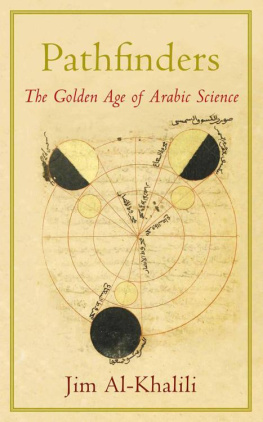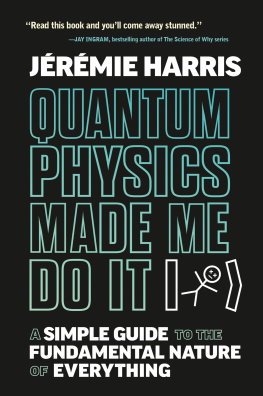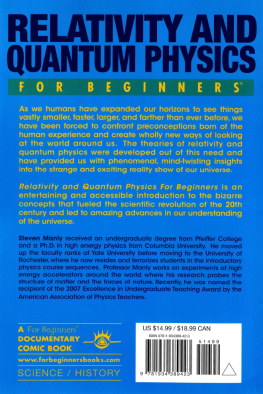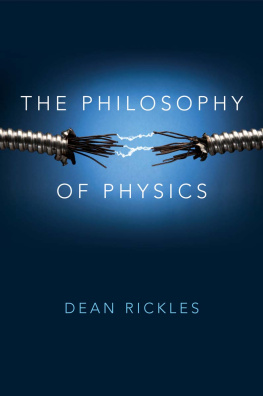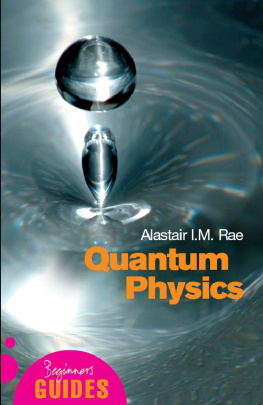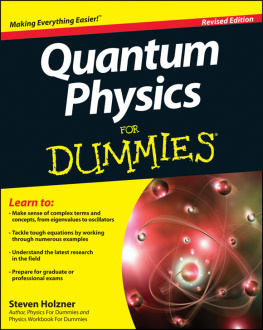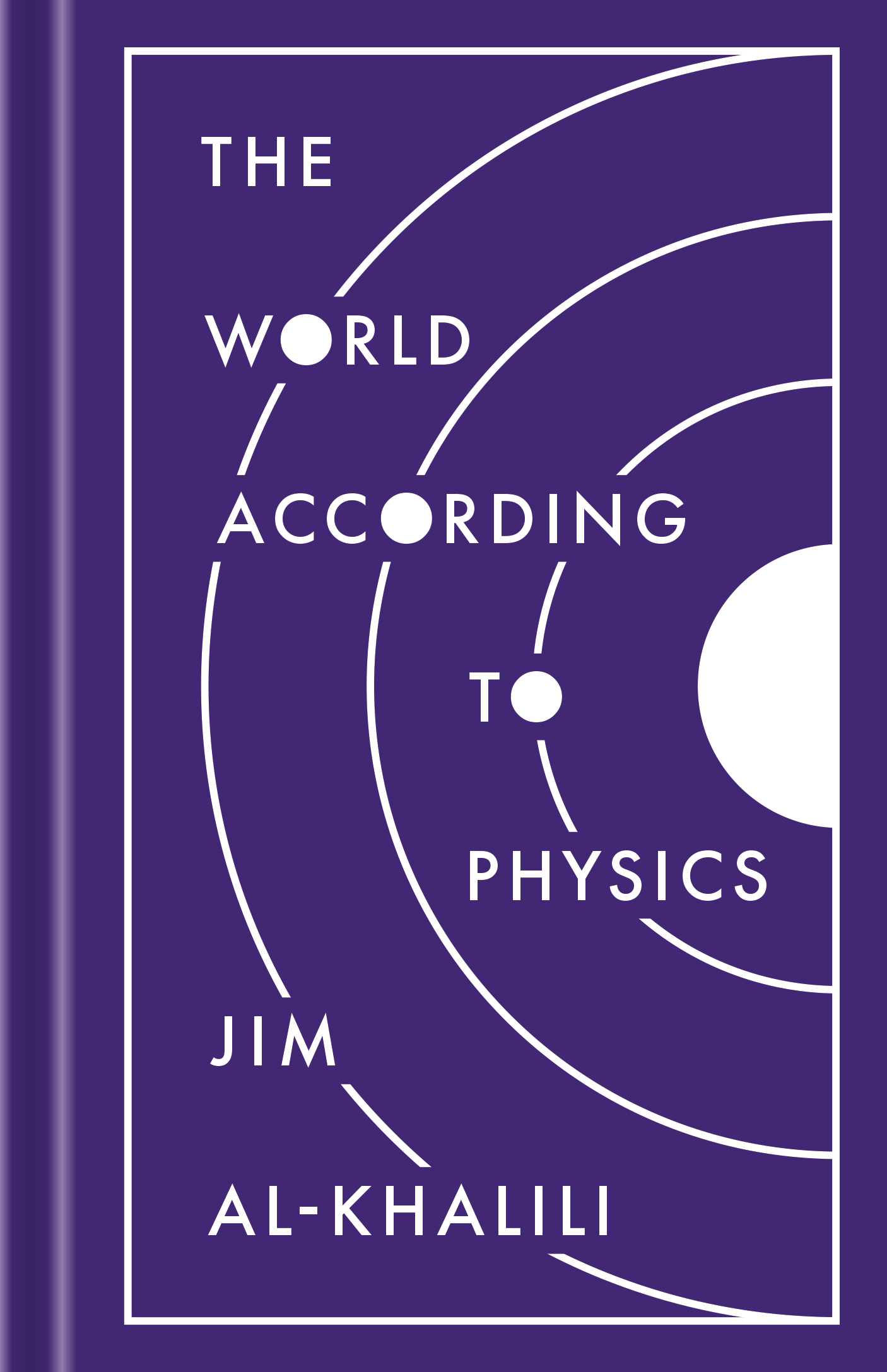PRAISE FOR
THE WORLD ACCORDING TO PHYSICS
The physical world is strange and full of surprises. And yet, as Jim Al-Khalili shows, it is far from incomprehensible. His simple, profound, and accurate account of core principles makes mind-expanding knowledge accessible to general readers.
Frank Wilczek, 2004 Nobel laureate, author of A Beautiful Question
So much science packed into such a tiny package! Jim Al-Khalili manages to give an accessible overview of an enormous amount of modern physics, without it ever feeling rushed. This book will be enjoyed by anyone who wants a glimpse of how modern physicists are thinking about some of the hardest problems in the universe.
Sean Carroll, author of Something Deeply Hidden: Quantum Worlds and the Emergence of Spacetime
Clearly written and inviting, even to readers who may not at first consider themselves scientific, The World According to Physics is a book that should be read and appreciated by many.
Jocelyn Bell Burnell, University of Oxford
A clear, simple, and fascinating account of what physics tells us about our universe, andcruciallywhat evidence supports that view, from one of the most talented, inspiring, and informative popularizers of science. A triumph!
Ian Stewart, author of Do Dice Play God?
This book presents a comprehensive account of modern physics, weaving together a tapestry of new and familiar topics. Al-Khalili has a distinctively light voice that comes across throughout and works incredibly well.
Pedro G. Ferreira, author of The Perfect Theory: A Century of Geniuses and the Battle over General Relativity
THE WORLD ACCORDING TO PHYSICS
WORLD ACCORDING TO PHYSICS
JIM AL-KHALILI
PRINCETON UNIVERSITY PRESS
PRINCETON AND OXFORD
Copyright 2020 by Jim Al-Khalili
Requests for permission to reproduce material from this work should be sent to permissions@press.princeton.edu
Published by Princeton University Press
41 William Street, Princeton, New Jersey 08540
6 Oxford Street, Woodstock, Oxfordshire OX20 1TR
press.princeton.edu
All Rights Reserved
ISBN 978-0-691-18230-8
ISBN (e-book) 978-0-691-20167-2
Version 1.0
British Library Cataloging-in-Publication Data is available
Editorial: Ingrid Gnerlich and Arthur Werneck
Production Editorial: Mark Bellis
Text and Cover Design: Chris Ferrante
PREFACE
This book is an ode to physics.
I first fell in love with physics when I was a teenager. Admittedly, this was partly because I realised I was good at it. The subject seemed to be a fun mix of puzzle-solving and common sense, and I enjoyed playing with the equations, manipulating the algebraic symbols, and plugging in numbers so that they revealed the secrets of nature. But I also realised that if I wanted satisfying answers to the many deep questions about the nature of the universe and the meaning of existence bubbling up in my teenage mind, then physics was the subject I had to study. I wanted to know: What are we made of? Where do we come from? Does the universe have a beginning, or an end? Is it finite in extent, or does it stretch out to infinity? What was this thing called quantum mechanics that my father had mentioned to me? What is the nature of time? My quest to find answers to these questions has led to a life spent studying physics. I have some answers to my questions now; others I am still searching for.
Some people turn to religion or some other ideology or belief system to find answers to lifes mysteries. But for me, there is no substitute for the careful hypothesising, testing, and deducing of facts about the world that are the hallmark of the scientific method. The understanding we have gained through scienceand physics in particularof how the world is made up and how it works is, in my view, not just one of many equally valid ways of reaching the truth about reality. It is the only reliable way we have.
No doubt many people never fell in love with physics, as I did. Perhaps they were turned off from studying science because they decided, or perhaps were told by others, that it is a hardor a geekysubject. And to be sure, getting to grips with the subtleties of quantum mechanics can bring on a headache. But the wonders of our universe can and should be appreciated by everyone, and gaining a basic understanding doesnt take a lifetime of study. In this book, I want to describe why physics is so wonderful, why it is such a fundamental science, and why it is so crucial to our understanding of the world. The grand scope and sweep of physics today are breathtaking. That we now know what (almost) everything we see in the world is made of and how it holds together; that we can trace back the evolution of the entire universe to fractions of a second after the birth of space and time themselves; that through our knowledge of the physical laws of nature we have developed, and continue to develop, technologies that have transformed our livesthis is all pretty staggering. I still find myself thinking, as I write this: How can anyone not love physics?
This book is intended to serve as an introduction to some of the most profound and fundamental ideas in physics. But the topics I cover are not ones you will likely have encountered at school. For some readers, the book may be a first invitation into physicsone that will entice you to learn more about it, maybe even pursue it as a lifelong journey of study and discovery, as I have. To others, who may have gotten off on the wrong foot with physics early on, it may serve as a gentle reintroduction. For many, it may provoke wonder at just how far humanity has come in its quest to understand.
To convey a working knowledge of what physics tells us about the nature of our world, I have selected an array of the most important concepts in modern physics and attempted to show how they link together. Well survey the vast range of this conceptual landscape, from the physics of the largest cosmic scales to that of the smallest quantum level; from physicists quest to unify the laws of nature to their search for the simplest possible physical principles governing life; from the speculative frontiers of theoretical research to the physics that underpins our everyday experiences and technologies. I will also offer readers some new perspectives: ideas that we physicists have learnt to accept, but which we havent done a very good job of conveying to those outside our innermost circles of experts. For example, down at the subatomic scale, separated particles communicate with each other instantaneously despite being far apart, in a way that violates common sense. This property, called nonlocality, may force us ultimately to revise our entire understanding of the structure of space itself. But, sadly, many non-physicistsand indeed some physicistsmisunderstand or misinterpret what this really means.
A criticism levelled (usually by theoretical physicists) at many popular science books covering fundamental concepts in physics is that they dont always help the lay reader grasp what these concepts actually mean. In my view, this is because the physicists who truly understand the concepts, and who write the research papers and come up with new theories, are not necessarily the best at explaining their own ideas to non-physicists. But, in turn, those who may have more experience and success with communicating their work to the public may not understand certain concepts deeply enough themselves to go beyond simple analogies. Even if one understands the physics and can successfully (I hope) communicate with non-physicists, it is not a small challenge to explain terms like gauge invariance, duality, eternal inflation, the holographic principle, conformal field theories, anti-de Sitter spaces or vacuum energy in a way that conveys real insight into the physics involved, without involving complex mathematics. I have done my best, but there may well be some readers who feel I could have done better. And, of course, this will be true.


